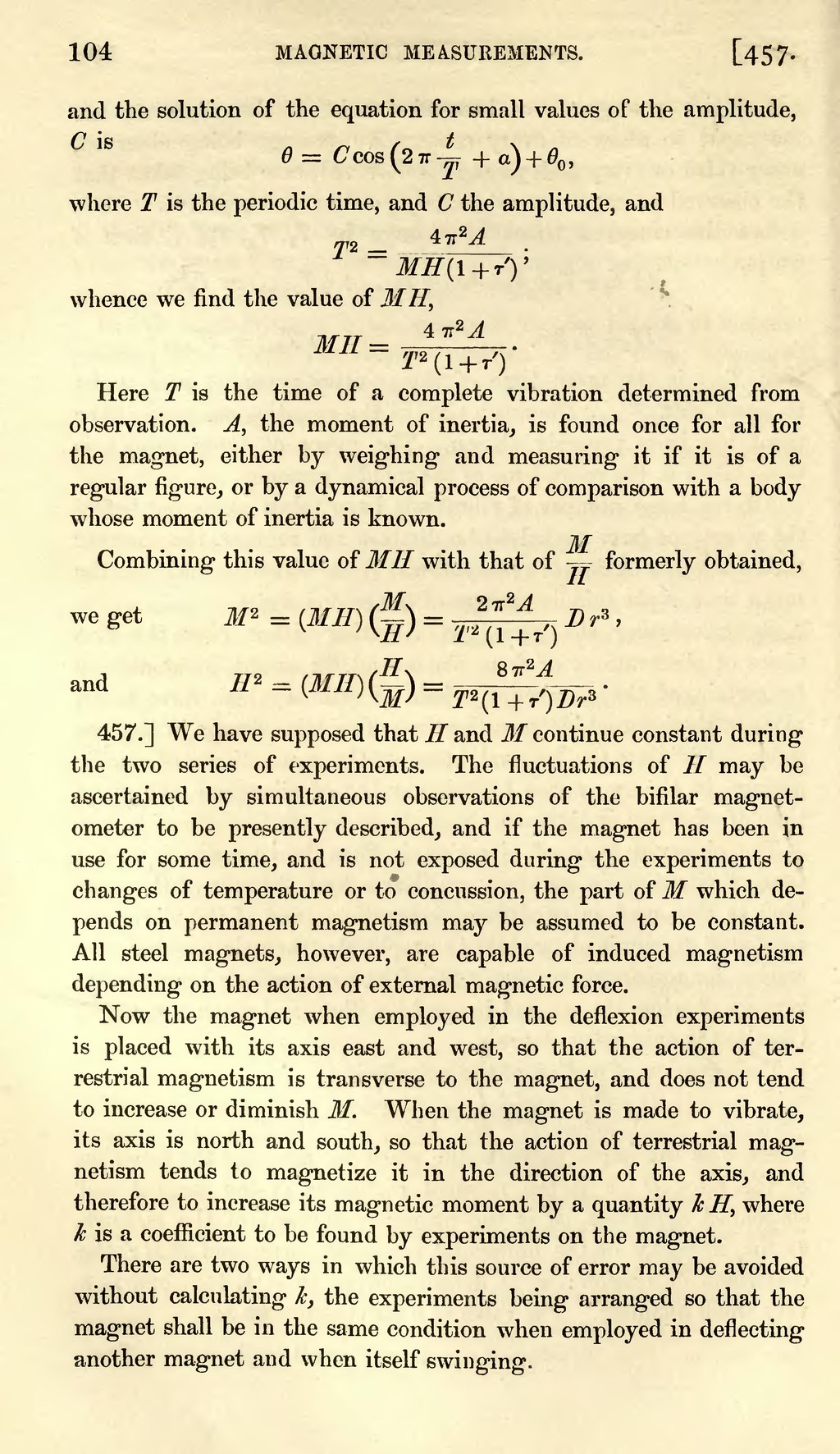and the solution of the equation for small values of the amplitude, is
where is the periodic time, and the amplitude, and
;
whence we find the value of ,
.
Here is the time of a complete vibration determined from observation. , the moment of inertia, is found once for all for the magnet, either by weighing and measuring it if it is of a regular figure, or by a dynamical process of comparison with a body whose moment of inertia is known.
Combining this value of with that of formerly obtained, we get
,
and
.
457.] We have supposed that H and M continue constant during the two series of experiments. The fluctuations of // may be ascertained by simultaneous observations of the bifilar magnetometer to be presently described, and if the magnet has been in use for some time, and is not exposed during the experiments to changes of temperature or to concussion, the part of which depends on permanent magnetism may be assumed to be constant. All steel magnets, however, are capable of induced magnetism depending on the action of external magnetic force.
Now the magnet when employed in the deflexion experiments is placed with its axis east and west, so that the action of terrestrial magnetism is transverse to the magnet, and does not tend to increase or diminish . When the magnet is made to vibrate, its axis is north and south, so that the action of terrestrial magnetism tends to magnetize it in the direction of the axis, and therefore to increase its magnetic moment by a quantity , where is a coefficient to be found by experiments on the magnet.
There are two ways in which this source of error may be avoided without calculating , the experiments being arranged so that the magnet shall be in the same condition when employed in deflecting another magnet and when itself swinging.














